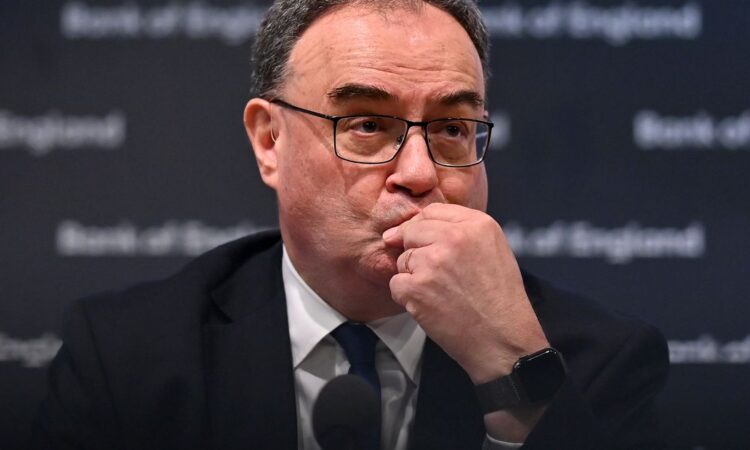
Andrew Bailey said he has seen ‘strong evidence’ that the process to reduce inflation ‘is working its way through’ as UK interest rates remain at a 15-year-high of 5.25%
Bank of England Governor, Andrew Bailey, has expressed optimism about the global economy, noting “very encouraging signs” in its recovery.
Speaking to the IMF, Bailey observed “strong evidence” that efforts to curb inflation are taking effect, despite UK interest rates hitting a 15-year peak at 5.25%. This statement follows shortly after the IMF released new projections indicating the UK is set for slower growth than anticipated this year, placing it near the bottom of the G7 economic league table.
The IMF also warned on Tuesday that rising tensions in the Middle East could lead to increased food and energy costs worldwide. In his discussion with the IMF, Bailey pointed out the economy’s durability.
“I agree with the IMF forecasts and that we are seeing very encouraging signs,” he remarked. Bailey highlighted not only the global economic activity and resilience but also mentioned the trend towards disinflation.
“In the UK we are disinflating at what I would say is full employment. But I see strong evidence now that the process is working its way through.” He further elaborated on the Bank’s approach to interest rates: “Our judgment with interest rates is how much do we need to see now to be confident of the process.”
These comments come as financial markets have recently lowered their expectations regarding the speed at which the Bank of England might reduce interest rates. Following the disclosure of higher than anticipated wage growth at 6% for the three months leading to February, according to Office for National Statistics, there was added strain on Tuesday morning.
Mr Bailey emphasised that in comparison to those faced by policy makers in the US, the UK and other European countries are experiencing different issues. In his words: “I think the dynamics of inflation are rather different between Europe and the US.”
He pointed out a greater inflation pressure driven by demand in the US, saying, “There is more demand led inflation pressure in the US than we are seeing, so I think the inflation dynamics are different. We are still seeing the extension of the process of coming out of the big supply shocks that we had the impact of the war, the impact of coming out of Covid.”





